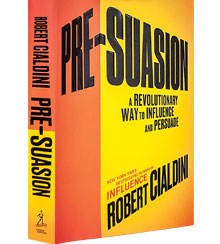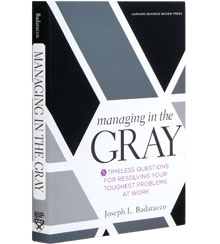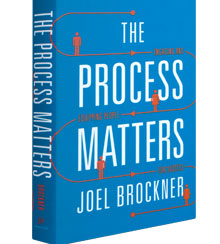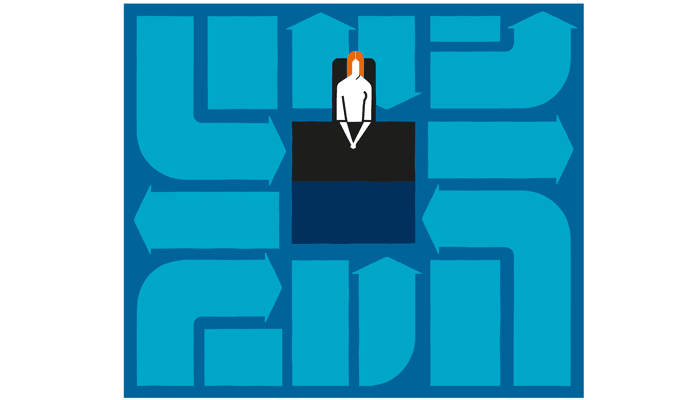Best Business Books 2016: Management
Pre-Suasion, Problem Solving, and Process Design
Robert Cialdini
Pre-Suasion: A Revolutionary Way to Influence and Persuade (Simon & Schuster, 2016)
* A TOP SHELF PICK
Joseph L. Badaracco
Managing in the Gray: Five Timeless Questions for Resolving Your Toughest Problems at Work (Harvard Business Review Press, 2016)
Joel Brockner
The Process Matters: Engaging and Equipping People for Success (Princeton University Press, 2016)
It’s satisfying when corporate wrongdoing comes complete with a villain, preferably someone larger than life and twice as mean. Having an evil mastermind à la Bernie Madoff to pin things on sets up a happy ending. The bad guy or gal is brought to justice and, voilà, all is right in the business world.
Unfortunately, we are often denied that satisfaction. Some organizational disasters — such as the Deepwater Horizon oil spill and Dieselgate — seem to occur as a result of unintentional internal combustion. Scapegoats always seem to be found, but it’s a stretch to argue that there was a black-mustachioed villain who put match to fuse. Instead, when the investigations are over, the real culprit turns out to be a hodgepodge of systems, processes, or managerial decisions that didn’t raise alarms until the consequences suddenly exploded.
This year’s three best business books on management offer compelling and useful advice on how to avoid such problems. In Pre-Suasion, the best of the group, Robert Cialdini explains how managers can be predisposed to make constructive decisions and can predispose others to take constructive action. In Managing in the Gray, Joseph L. Badaracco shows how managers can make difficult decisions in a more responsible manner. And in The Process Matters, Joel Brockner explores how the decisions that managers make when constructing processes can help prevent undesirable outcomes.
Can You Hear Me Now?
More than 30 years ago, a psychology professor at Arizona State University named Robert Cialdini wrote a book that, like most other books, quickly and quietly sank beneath the relentless waves of new releases. But then, a few years later, Influence: Science and Practice resurfaced, buoyed by the growing interest in the mashup of psychology and economics now called behavioral economics. An eager audience of marketing and sales pros, including, ironically, the very “peddlers, fundraisers, and operators of one sort or another” whom Cialdini had been hoping to arm his readers against, ate it up. Influence, with its six principles explaining how others get us to do what they want, went on to sell more than 2 million copies.
Pre-Suasion: A Revolutionary Way to Influence and Persuade is an intellectual prequel to Influence. It explores an insight that came to Cialdini when he “infiltrated the training programs of a broad range of professions dedicated to getting us to say yes.” While shadowing top-performing professionals in such fields as sales, direct marketing, corporate recruiting, and frontline management, he discovered that “the best persuaders become the best through pre-suasion — the process of arranging for recipients to be receptive to a message before they encounter it.”
There was, for instance, the fire-alarm system salesman whose behavior puzzled Cialdini. This guy forgot something in his car on every appointment, and always remembered it while the homeowners were completing a knowledge assessment. He would ask permission to leave and re-enter the house, often getting handed a door key in the process. “Think, Bob,” the salesman eventually explained to the author. “Who do you let walk in and out of your house on their own? Only somebody you trust, right? I want to be associated with trust in those families’ minds.”
Cialdini found that the most effective persuaders are, like the alarm sales rep, experts at channeling our attention in order to create what he calls privileged moments — “identifiable points in time when an individual is particularly receptive to a communicator’s message.” It is possible to create these moments, research reveals, because we not only assign undue levels of importance to whatever captures our attention at a certain point in time, but also assign causality to it. This explains why CEOs get outsized credit for the success of their companies — and also why they make such satisfying scapegoats when disaster strikes. “The person at the top,” says Cialdini, “is visually prominent, psychologically salient, and hence, assigned an unduly causal role in the course of events.”
Channeling our attention, it turns out, is not all that difficult, even in this age of the smartphone and constant interruption. In fact, three attention attractors reliably cut through the fog: sex, violence, and (perhaps more appropriately for managers) novelty. Pavlov’s dogs, Cialdini points out, didn’t always salivate when the bell rang. When visitors arrived at Pavlov’s lab to witness the reflexive drooling, the bell didn’t produce the desired result. Pavlov gained a new insight: The strangers triggered an “investigatory reflex” in the dogs, a reflex more powerful than the dinner bell.
Further, once something attracts our attention, a number of “magnetizers” can be used to hold it in place. These include self-relevant cues, like the word you; unfinished ideas or tasks, which stymie our desire for cognitive closure; and, as the enduring popularity of a 130-year-old consulting detective named Sherlock Holmes testifies, mysteries. Why not simply deliver your message as soon as you have created a privileged moment? “The communicator who can fasten an audience’s focus on the favorable elements of an argument,” explains Cialdini, “raises the chance that the argument will go unchallenged by opposing points of view, which get locked out of attention as a consequence.”
Cialdini offers many more tips and tactics in this handbook on the ways and means of pre-suasion, which managers can and should use to become more effective influencers. But he also devotes considerable effort to persuading us to wield pre-suasion in an ethical manner. Surprisingly, Cialdini considers and rejects the idea that the risk of getting caught is a compelling enough reason to avoid devious practices, because studies show that “uncomfortably large numbers of [senior business leaders] are willing to undertake misconduct anyway.” Instead, he focuses on the organizational consequences, citing his own research, which reveals that companies that condone and use deceitful tactics raise the risks of an implosion triggered by poor employee performance, high employee turnover, and employee fraud and malfeasance.
The bottom line in the best business book of the year on management: Pre-suaders are more effective influencers, and they reap what they sow.
The Anatomy of Gray
Cialdini’s obvious concern about his work being misused, combined with the studies he cites in which “close to half of high-ranking executives reported that they would act unethically to get or retain business,” suggests that the way in which many managers are making decisions needs some serious reframing. No book published this past year makes this case better than Managing in the Gray: Five Timeless Questions for Resolving Your Toughest Problems at Work, by Joseph L. Badaracco.
Badaracco, who was the first tenured professor of ethics at Harvard Business School, has been writing about leadership integrity, responsibility, and ethics since the 1980s. He does so in a nuanced and empathetic manner that clearly recognizes the challenges and conflicts routinely faced by well-meaning managers as they strive to make decisions.
With Managing in the Gray, Badaracco jumps into the deepest thickets of decision making. “Gray areas are basically organizational versions of the classic Gordian knot: that is, they are dense tangles of important, complicated, and uncertain considerations,” he writes.
Gray areas harbor the big and small decisions that not only try managers’ brains, but also can come back to lop off their heads. Your company needs to cut costs and maximize the flow of oil. Should you postpone that costly safety check that’s going to take 90 days to complete? It’s impossible to meet the conflicting demands of low emissions and high gas mileage without a misleading software fix. Should you use it?
Remembering that the above questions sound like no-brainers only in hindsight, how should a manager respond when confronted with similar dilemmas? “The answer, in its shortest form,” writes Badaracco, “can be stated in a single sentence: When you face a gray area problem at work, you should work through it as a manager and resolve it as a human being.”
“When you face a gray area problem at work, you should work through it as a manager and resolve it as human being.”
That might sound a touch cavalier. But Badaracco backs it up with a five-question process to help managers meet the challenge. First, ask what are the net, net consequences. This means thinking deeply and broadly about the available options and “asking what you will be doing for other people and to other people, depending on the options you choose.”
Next, the ethics professor goes all humanist on us. “What are my core obligations?” he wants us to ask. This is a doozy of a query, because Badaracco isn’t talking about a manager’s obligation to his or her employer. Rather, he means “one’s basic duties as a human being.” It’s not exactly clear what those duties are. But Badaracco suggests that they stem from two fundamental dictates: the human right to live without needless danger, pain, and suffering, and the human right to be treated with respect and dignity.
Then, Badaracco begins channeling Machiavelli, focusing on the practical aspects of decision making. “What will work in the world as it is?” he suggests we ask next. Of course; decisions that won’t work in the real world are useless.
With his final questions, Badaracco gives managers the queries they need to zero in on their final answer. The fourth — “Who are we?” — requires seeking “options that will reflect, express, and give reality” to the norms and values of the company and community to which the manager belongs. And the final question gets to the self-perception of managers as human. “What can I live with?” The crux of gray-area problems is that there is no right answer, and that means managers must create an answer. Then, right or wrong, they must be able to live with its consequences.
Resolving gray-area problems won’t always be pretty, no matter what process managers follow. Throughout Managing in the Gray, Badaracco keeps coming back to the story of Aaron Feuerstein. Feuerstein owned Malden Mills, a fabric company that had invented Polartec fleece. In 1995, when its factory was destroyed in a fire, Feuerstein made headlines with his heroic and hasty decision to rebuild the fabric factory with the latest technology and keep all of its employees on the payroll throughout the construction. He did just that, but the company never recovered and went bankrupt in 2001. Afterward, Feuerstein was asked what epitaph he wanted on his tombstone. “After a long pause,” reports Badaracco, “he said simply, ‘He did his damnedest.’”
The Power of the Process
Asking Badaracco’s five questions suggests that even when managers get the final answer wrong, the process that they follow can be a source of solace and redemption in and of itself. The idea that how we do things can be as important as what we do — a concept popular in psychology circles — is supported strongly in The Process Matters: Engaging and Equipping People for Success, by Columbia Business School professor Joel Brockner.
Process plays a much more significant role in corporate performance than is commonly understood, according to Brockner. But unlike most business process engineers, he isn’t interested in cycle time, volume, and quality. Instead, he focuses on how employees perceive processes — and how by constructing processes in certain ways, managers can bolster the success rate of change initiatives, enhance employee productivity and morale, and promote ethical behavior.
That perception is rooted in the concept of fairness. “Process fairness has a huge impact on how well employees react to a wide array of organizational events and decisions,” writes Brockner. “Whether you are trying to gain support from many people or even a single person for a particular decision, you better make sure that they believe the process is fair.”
Brockner finds evidence for this assertion in numerous studies, including a study of expats, which he conducted with Ron Garonzik of the Korn Ferry Hay Group and Phyllis Siegel of Rutgers Business School. It found that expats who were having trouble adjusting to their new surroundings — for family and other reasons — were less likely to return home prematurely “if their employers allowed them to have input into decisions and if they felt that their employers generally treated them with dignity and respect.”
The real payoff for process fairness comes when outcomes head south. Brockner finds that employees are far more willing to accept negative outcomes when they feel that the process was fair. Conversely, if outcomes are negative and the process is seen as unfair, it adds insult to injury.
For instance, Brockner’s own research into the reactions of employees who remained on the job after layoffs found that their productivity and morale suffered when they felt that the layoff process was unfair to their former colleagues. Moreover, it revealed that process fairness could compensate for smaller severance packages in the estimation of the remaining employees. “Survivors responded about the same when they believed the package was moderately generous and the process was handled fairly as they did when they believed the package was highly generous and the process handled not so fairly,” writes Brockner.
The Process Matters also explains the instrumental role of process in the ethical behavior of employees. “First, those on the receiving end of high process fairness behave more ethically. Not only do they steal less, but they also show their ethicality by behaving with greater process fairness toward others,” says Brockner. “Second…the more that the process causes people to see themselves as having esteem, identity, or control [that is, global self-integrity], the more ethically they behave.”
The business school professor casts a wide net into a seemingly bottomless pool of research to help managers design better processes. Occasionally, the net gets tangled, and The Process Matters drifts into the weeds. But most of the time, he hauls in a promising catch. “Doing the process well often entails simple things like involving people in decisions, showing respect, and doing things transparently. Not exactly rocket science,” Brockner writes. “Furthermore, doing the process well may not require much in the way of tangible resources.”
Reprint No. 16415
Author profile:
- Theodore Kinni is a contributing editor of strategy+business. He has written, as a named author or a ghostwriter, 15 business books.








